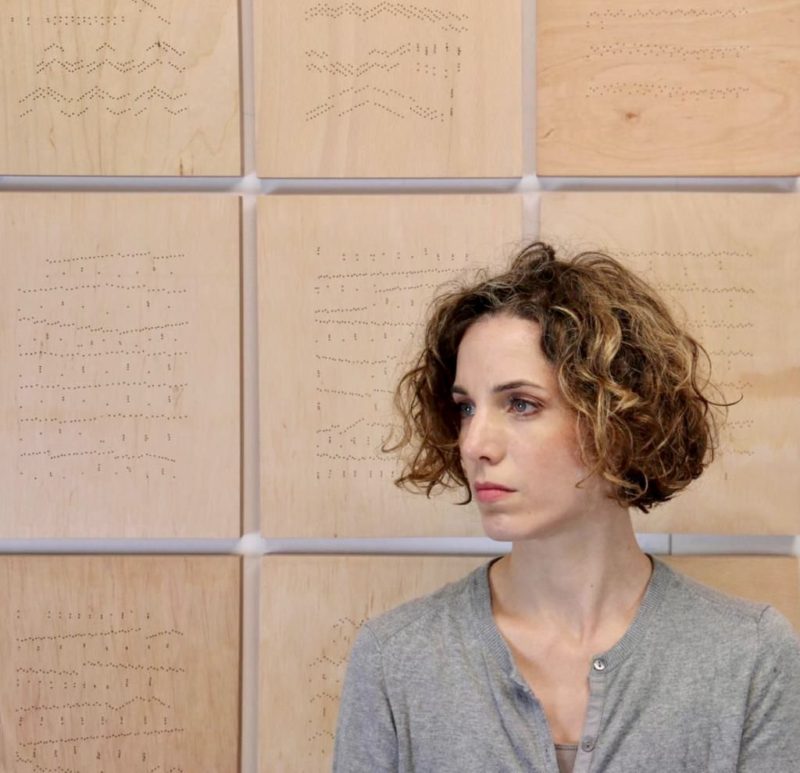
Ana Pérez Ventura (Santiago de Compostela, Spain, 1981) draws inspiration from various ideas and techniques used in her musical practice as a pianist to create her body of work as a fine artist.
She studied Fine Arts at the Universities of Vigo and Barcelona and Music at the conservatories of Vigo and Amsterdam. In 2009, she obtained a master’s degree in music from Sorbonne University, focusing on the relations between the two disciplines. Since then she has resided in Paris, researching the possibilities of interaction between the visual arts and music, with repetition as a fundamental resource.
Her own experience as a pianist, along with repetitive exercises, which she performs daily to perfect her mastery of the instrument, have served as the foundation for her work that has already been awarded the Artension prize and scholarships from the Barrié de la Maza Foundation and the Segundo Gil Dávila Foundation. She also participated in the 2nd Encontro de Artistas Novos (Meeting of New Artists) in the City of Culture of Galicia. She has exhibited in solo exhibitions in the Colegio de España, Sorbonne University, Maison des Étudiants Suédois in Paris, and the Parisian galleries H Gallery, Artemper and Point Doré. She is currently represented by the Spanish gallery Metro. She has also participated in group exhibitions at the CGAC, Auditorio de Galicia, Château de la Veyrie de Bernin, Abstract Projet, Parc Floral, Galerie Sisso, the Polytechnic of Valencia and Guoyi Art Museum. Her work is in various public collections, including the CGAC, Spain; Diputación de Ourense, Spain; and the Colegio de España at the Cité Internationale Universitaire de Paris, France.
Her two passions have run through her life on even paths until she linked them naturally, searching for a way for art to help her capture and record the material intangible time of music. Her experience as a classical pianist is of great importance in her artwork. There are countless hours of repeating exercises and passages of scores that become gestures on the instrument. In this slow learning process, the body must internalize the movements, which is only achieved through repetition. It is an ephemeral process that is diluted as it is produced and ceases to be so when it is taken to painting. She is interested in the different variations that inevitably occur in each repetition. Her artwork makes an organic record of the passage of time, like a human metronome.